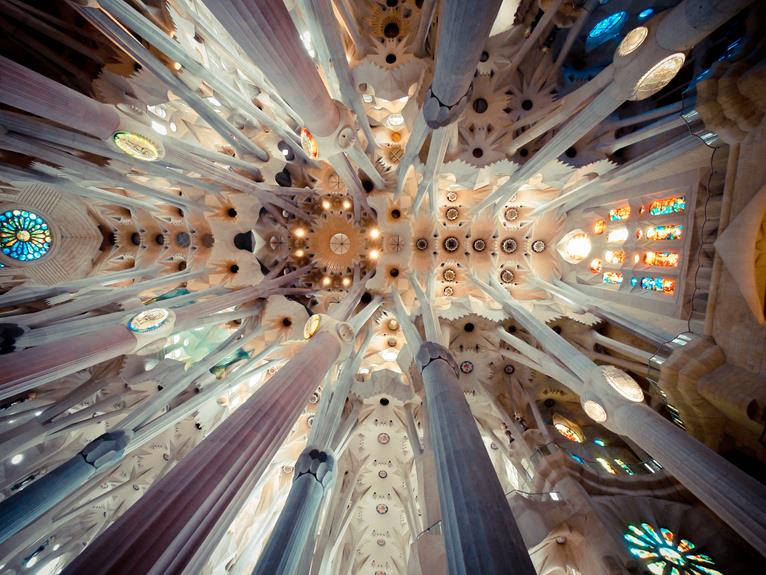
Hey there! Ever wondered about the hidden treasures of Spain's rich history? Well, get ready to be amazed as I take you on a journey to discover some of the lesser-known historical gems in this vibrant country. From Roman ruins in Merida to ancient cave paintings in Altamira, we'll explore the fascinating stories behind these hidden wonders. So, grab your map and let's uncover the secrets of Spain together. Let's dive in!
Key Takeaways
Table of Contents
- Roman Ruins in Merida and Moorish Castle in Ronda: Magnificent structures showcasing the grandeur and architectural prowess of ancient civilizations.
- Ancient Cave Paintings in Altamira: Intricate artworks providing valuable insights into the lives and beliefs of early humans.
- Medieval Castle in Segovia: A remarkable blend of architectural styles with a rich history and legendary origins.
- Prehistoric Dolmens in Antequera: Ancient burial sites offering a glimpse into prehistoric societies and their rituals.
Roman Ruins in Merida
I love exploring the Roman ruins in Merida. One of my favorite sites is the Roman Amphitheater, a magnificent structure that once hosted gladiator battles and other spectacles. As I stand in the ancient arena, I can almost hear the cheers of the crowd and feel the excitement in the air. The grandeur of the amphitheater is truly awe-inspiring, with its towering walls and perfectly preserved seating areas. Another highlight of Merida's Roman ruins is the Temple of Diana, dedicated to the Roman goddess of the hunt. The temple's intricate columns and exquisite carvings transport me back in time, allowing me to imagine the religious ceremonies that took place here centuries ago. Merida's Roman ruins are a true testament to the city's rich history and are definitely worth exploring.
Moorish Castle in Ronda
Continuing our exploration of historical sites in Spain, let's now turn our attention to the Moorish Castle in Ronda, where can we find traces of Moorish influence? This magnificent fortress, perched on a rocky cliff, offers a glimpse into Spain's rich history and architectural heritage. Here are some highlights:
- Impressive Moorish architecture: The castle showcases the distinctive features of Moorish design, including intricate geometric patterns, horseshoe arches, and ornate tilework.
- Breathtaking views: From the castle's vantage point, visitors can marvel at the stunning panoramic views of the surrounding countryside and the iconic Puente Nuevo bridge.
- Historical significance: The Moorish Castle played a crucial role in the region's history, serving as a strategic stronghold during the Muslim rule in Spain.
- Cultural significance: It serves as a tangible symbol of the enduring influence of Moorish culture and its contributions to Spain's identity.
- Preservation efforts: The castle's restoration and preservation efforts ensure that future generations can appreciate and learn from this important historical site.
Visiting the Moorish Castle in Ronda is a must for history enthusiasts and those eager to immerse themselves in Spain's rich cultural heritage.
Ancient Cave Paintings in Altamira
Located in the region of Cantabria, Altamira is home to ancient cave paintings that provide a fascinating glimpse into prehistoric art. Exploring prehistoric art is like stepping back in time and trying to understand the lives of early cave dwellers. The paintings, created over 14,000 years ago, depict animals such as bison, horses, and deer, as well as abstract symbols and handprints. These intricate and well-preserved artworks offer valuable insights into the artistic skills, beliefs, and daily lives of our ancient ancestors. The cave paintings of Altamira are not only a testament to the creativity and ingenuity of early humans, but also serve as a connection between our present and the distant past, allowing us to understand and appreciate the rich cultural heritage that our ancestors left behind.
Medieval Castle in Segovia
As I explored the ancient cave paintings in Altamira, my curiosity led me to the next hidden gem: a medieval castle in Segovia. This imposing fortress, known as Segovia Castle, has stood tall for centuries, captivating visitors with its rich history and stunning architecture.
Here are five reasons why Segovia Castle is a must-visit:
- Its architecture is a remarkable blend of Romanesque and Gothic styles, showcasing the region's architectural evolution.
- With origins dating back to the 12th century, the castle has witnessed countless historical events, making it a treasure trove of stories and legends.
- One such myth is that the castle was built by the devil himself in just one night, using only his bare hands and a cauldron of soup.
- The castle offers breathtaking panoramic views of Segovia, providing a glimpse into the city's past and present.
- Its unique shape, resembling the bow of a ship, adds to the castle's allure, making it a distinctive landmark in the region.
Segovia Castle truly embodies the essence of medieval Spain, inviting visitors to step back in time and immerse themselves in its fascinating history and mythical tales.
Prehistoric Dolmens in Antequera
After exploring Segovia Castle, my journey to uncover hidden gems of Spain led me to the prehistoric dolmens in Antequera. These dolmens, dating back to the Bronze Age, are ancient burial sites that hold great cultural significance. The preservation of these dolmens is crucial in understanding the prehistoric societies that once inhabited the region. The dolmens consist of large stone slabs arranged to form chamber tombs, with some even featuring intricate carvings and decorations. These structures offer a glimpse into the beliefs and rituals of the people who built them. Their cultural significance lies in their ability to connect us to our ancient ancestors and provide insights into their way of life. The preservation of these dolmens ensures that future generations can continue to learn from and appreciate these remarkable prehistoric sites.
Frequently Asked Questions
How Can I Access the Roman Ruins in Merida and Are There Any Guided Tours Available?
To access the Roman ruins in Merida, you can visit the local tourist office for information on guided tours. They are usually available and provide a fascinating insight into the history of the site.
Is Photography Allowed Inside the Moorish Castle in Ronda?
Yes, photography is allowed inside the Moorish Castle in Ronda. However, there may be some restrictions in certain areas. It is also important to note that the castle may not be fully accessible for disabled visitors.
Are the Ancient Cave Paintings in Altamira Open to the Public and Is There an Entrance Fee?
Yes, the ancient cave paintings in Altamira are open to the public with an entrance fee. It's important to preserve these historical sites while also making them accessible for people to appreciate their beauty and significance.
Can Visitors Explore the Medieval Castle in Segovia on Their Own or Is a Guided Tour Necessary?
You don't need a guided tour to explore Segovia Castle. Visitors are free to explore on their own. It's a great opportunity to immerse yourself in the history and architecture of this medieval gem.
Are the Prehistoric Dolmens in Antequera Wheelchair Accessible?
Yes, the prehistoric dolmens in Antequera are wheelchair accessible. I visited them on my own and had no issues navigating the site. Guided tours are available for those who prefer a more informative experience.




Leave a Reply
You must be logged in to post a comment.